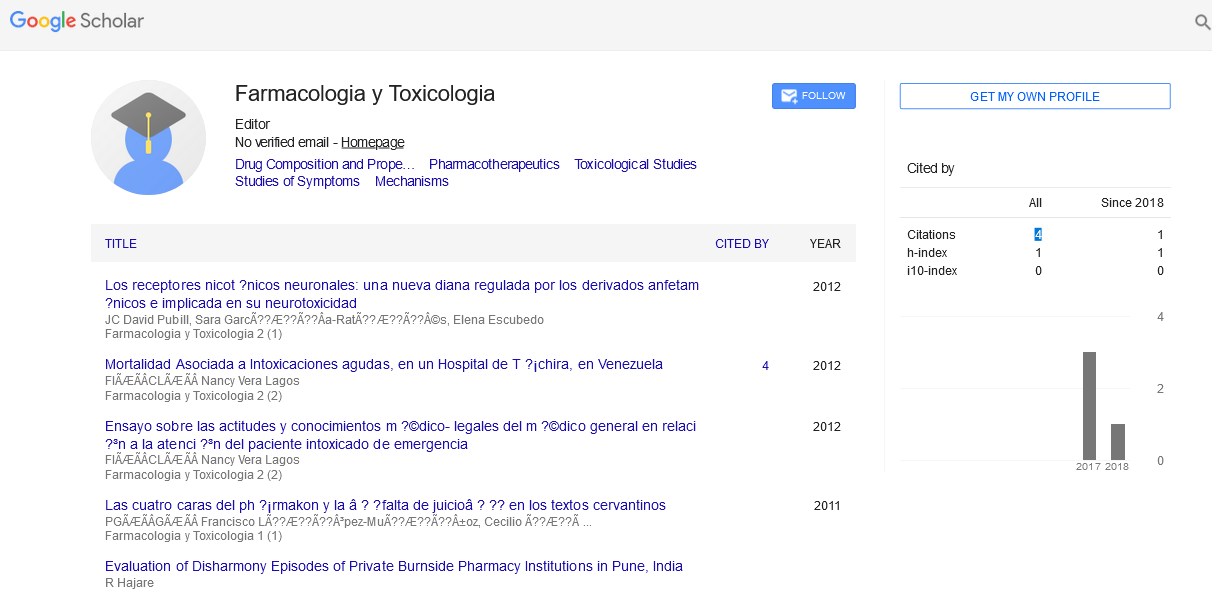Perspective - (2024) Volume 14, Issue 5
Therapeutic Index: Balancing Efficacy and Safety in Drug Therapy
Jiahui Han*
Department of Pharmacology, University of Shamies, Cairo, Egypt
*Correspondence:
Jiahui Han, Department of Pharmacology, University of Shamies, Cairo,
Egypt,
Email:
Received: 07-Aug-2024, Manuscript No. IPFT-24-15132;
Editor assigned: 12-Aug-2024, Pre QC No. IPFT-24-15132 (PQ);
Reviewed: 26-Aug-2024, QC No. IPFT-24-15132;
Revised: 01-Oct-2024, Manuscript No. IPFT-24-15132 (R);
Published:
29-Oct-2024
Introduction
In the realm of pharmacology, one of the critical measures
used to assess a drug’s safety profile is the Therapeutic Index
(TI). This ratio provides essential insights into the drug's safety
margin by comparing the doses required to achieve therapeutic
effects against those that could potentially cause toxicity.
Understanding the therapeutic index helps healthcare
professionals make informed decisions about drug
administration, balancing efficacy with safety to optimize patient
outcomes.
Description
Importance of therapeutic index
Safety assessment: The TI is a crucial measure for evaluating a
drug’s safety. Drugs with a high TI are generally considered safer
because there is a larger gap between therapeutic and toxic
doses. In contrast, drugs with a low TI pose a higher risk of
adverse effects, making dose adjustment and monitoring more
critical.
Drug development: During the drug development process,
the TI helps researchers and pharmaceutical companies gauge
the potential risks and benefits of a new medication. A high TI
can be a desirable characteristic, potentially leading to greater
acceptance and usage of the drug in clinical practice.
Clinical decision-making: For healthcare providers,
understanding the TI of a drug aids in making informed clinical
decisions. It helps in selecting appropriate dosages and
monitoring strategies, especially for drugs with a low TI that
require precise dosing and regular monitoring to prevent
toxicity.
Factors influencing therapeutic index
Several factors can influence the therapeutic index of a drug,
including:
Pharmacokinetics: The absorption, distribution, metabolism
and excretion of a drug affect its therapeutic index. Variations in
these processes among individuals can impact drug levels in the
body, potentially altering the TI.
Pharmacodynamics: The interaction between the drug and its
target receptors can influence its efficacy and safety. Changes in receptor sensitivity or the presence of competing substances can
affect the drug’s therapeutic and toxic effects.
Patient factors: Individual patient characteristics, such as age,
weight, genetic factors and underlying health conditions, can
affect drug metabolism and response. These variations can
influence the TI and necessitate personalized dosing
adjustments.
Drug interactions: Concurrent use of multiple medications
can lead to drug interactions that alter the efficacy and toxicity
of a drug. Such interactions can shift the TI, potentially
increasing the risk of adverse effects or reducing therapeutic
efficacy.
Examples of drugs with varying therapeutic indexes
Drugs with high therapeutic indexes: Medications like
penicillin, which has a high TI, are generally considered safe
because the therapeutic dose is much lower than the dose that
could cause toxicity. This wide safety margin allows for more
flexibility in dosing and reduces the risk of adverse effects.
Drugs with low therapeutic indexes: On the other hand,
drugs such as warfarin (an anticoagulant) and digoxin (used for
heart conditions) have a low TI. For these drugs, the difference
between the effective dose and the toxic dose is small, requiring
careful monitoring and precise dosing to prevent adverse effects.
Managing drugs with a low therapeutic index
For drugs with a low TI, management strategies are crucial to
minimize the risk of toxicity. These strategies include:
Regular monitoring: Frequent monitoring of drug levels,
along with assessing patient response and side effects, is
essential. This ensures that the drug remains within the
therapeutic range and helps in making necessary dose
adjustments.
Patient education: Educating patients about potential side
effects, signs of toxicity and the importance of adhering to
prescribed doses is vital. Informed patients are more likely to
report adverse effects promptly, enabling timely intervention.
Dose adjustments: Personalized dosing based on individual
patient characteristics, such as renal and hepatic function, can
help mitigate the risk of toxicity. Adjustments may be required
based on lab results and clinical assessments.
Drug interaction awareness: Evaluating and managing
potential drug interactions is essential, particularly for drugs with
a low TI. Healthcare providers should review all medications a
patient is taking to prevent adverse interactions that could
impact the drug’s safety profile.
Conclusion
The therapeutic index serves as a fundamental tool in
pharmacology, guiding the safe and effective use of medications.
By providing a measure of the safety margin between therapeutic and toxic doses, the TI helps healthcare
professionals make informed decisions about drug
administration. Understanding and managing the TI is
particularly crucial for drugs with a narrow margin of safety,
where precise dosing and vigilant monitoring are essential to
avoid adverse effects and achieve optimal therapeutic outcomes.
Through careful consideration of the therapeutic index,
healthcare providers can better navigate the complexities of
drug therapy, ultimately enhancing patient safety and treatment
efficacy.
Citation: Han J (2024) Therapeutic Index: Balancing Efficacy and Safety in Drug Therapy. Farmacologia Toxicologia, Vol.14 No.5: 047





